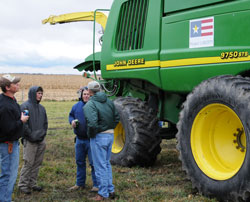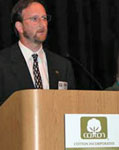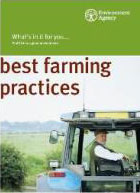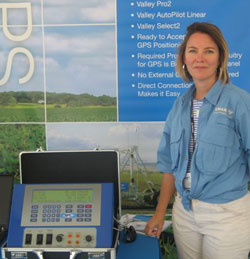 Soil and crop science associate professor Raj Khosla with Colorado State University recently busted a few myths about precision farming in an article for CSU’s Agronomy Newsletter.
Soil and crop science associate professor Raj Khosla with Colorado State University recently busted a few myths about precision farming in an article for CSU’s Agronomy Newsletter.
 MYTH 1: Precision farming is grid sampling
MYTH 1: Precision farming is grid sampling
While it is true that grid sampling was among the first few methods that the precision farming community (i.e., early adaptors) used to develop variability maps of crop production fields, precision farming does not rely on or even require grid sampling. What precision farming could do is precisely and accurately: (i) identify variability and its cause, (ii) quantify variability and its scale, (iii) record variability and its location, and (iv) map variability so that it can be managed. Grid soil sampling is only one such technique of quantifying variability; however, there are many other less expensive techniques available.
Currently there are several precision farming tools and techniques of varying input that do not involve grid sampling. These include, but are not limited to, site-specific management zones, remote sensing, apparent soil electrical conductivity measurements, yield mapping, and smart sampling. In fact, many of these methods were developed specifically to replace grid sampling. These methods run the gambit from low-tech and inexpensive to state-of-the-art sensors that can detect the nutrient status of a crop and vary the rate of fertilizer or other input on-the-go.
More myth-busting to come!

 Utilizing precision farming equipment when you’re harvesting corn will pay off even more once you can start harvesting corn cobs for cellulosic ethanol production. That’s what I learned at POET’s Project LIBERTY field day in Emmetsburg, IA this week. POET is working with ag OEM’s like John Deere to develop harvest equipment to collect cobs for the plants they plan on building in the near future. They plan to begin building a cellulosic ethanol production component of their Emmetsburg plant in late 2009 with production expected to begin in 2011.
Utilizing precision farming equipment when you’re harvesting corn will pay off even more once you can start harvesting corn cobs for cellulosic ethanol production. That’s what I learned at POET’s Project LIBERTY field day in Emmetsburg, IA this week. POET is working with ag OEM’s like John Deere to develop harvest equipment to collect cobs for the plants they plan on building in the near future. They plan to begin building a cellulosic ethanol production component of their Emmetsburg plant in late 2009 with production expected to begin in 2011.
 Precision cotton farming will be a focus of the upcoming Cotton Incorporated crop management seminar and workshops.
Precision cotton farming will be a focus of the upcoming Cotton Incorporated crop management seminar and workshops.  The
The 
 Farm Progress Companies Editorial Director, Willie Vogt, is writing a column for Pioneer Hi-Bred’s
Farm Progress Companies Editorial Director, Willie Vogt, is writing a column for Pioneer Hi-Bred’s